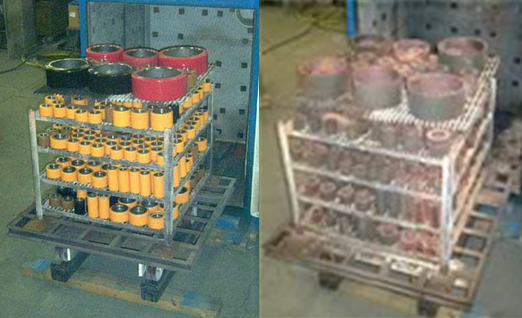The manufacturing industry comprises different types of organizations, which create a variety of devices, products, and components every year. When these products and components are used and sent for disposal, many are recycled so that they can be reused in the manufacturing process. To accomplish this, the products need to be rid of any contaminants, including rubber coatings, dirt, dust, grease, oil, paint, etc. While you may find many DY methods on the Internet, the easiest way to accomplish this is to use a burn-off oven.
A Brief Description of Burn-off Ovens
A type of metal parts cleaning equipment, burn-off ovens utilize high levels of energy to heat a part, and remove contaminants on its surface, or inside it. They are particularly useful for removing rubberized paint and powder coatings, cleaning automotive parts and accessories, electric motors, and rubber components from metal parts. The benefits of burn-off ovens are:
- They are easy in terms of installation and use.
- Components in large quantities can be cleaned together.
- They comprise a central heat distribution system, thus ensuring equal levels of heat to each part.
- Most burn-off ovens are automatic, which means an engineer doesn’t need to supervise the cleaning or removal processes.
The Process of Removing Rubber Coating from Metal
The process of using burn-off ovens to remove rubber from metal components is quite simple, and is not time consuming. All users need to do is follow the steps below:
- Place the components inside the burn-off oven, close it, and turn it on. To make the process easier, you can place the components in a portable cart, and roll them into the oven.
- When the oven is turned on, the oven temperature rises to a high level (around 800oF). The immense heat inside the oven causes the rubber coating to start peeling off from the part.
- Once the coating is completely removed, the oven continues to provide heat to convert the coating into ash and fumes.
- The ash settles at the bottom of the oven chamber, while the fumes are passed through an afterburner.
- Once the previous steps are completed, any remaining effluents, such as carbon dioxide or water vapors, are discharged from the oven.
- After the burn-off process is completed, the oven is shut down, and the cleaned part is removed, ready for recycling.
To ensure complete uniform heat, it would be better to choose a hybrid oven that provides convection, as well as radiant energy. Armature Coil Equipment (ACE) manufactures and offers Radiant Tube Burn-off Ovens in various models and sizes. They also provide metal cleaning services. You can learn more about burn-off ovens by clicking here.

